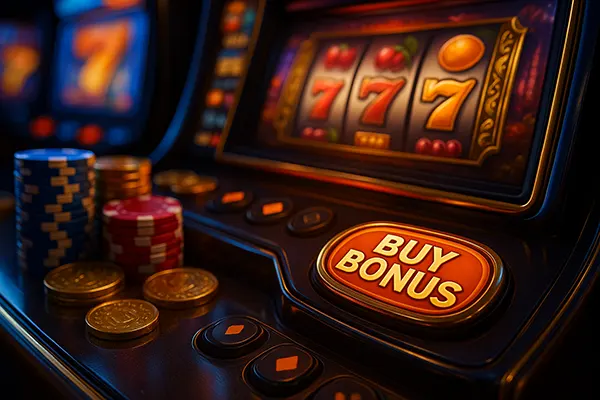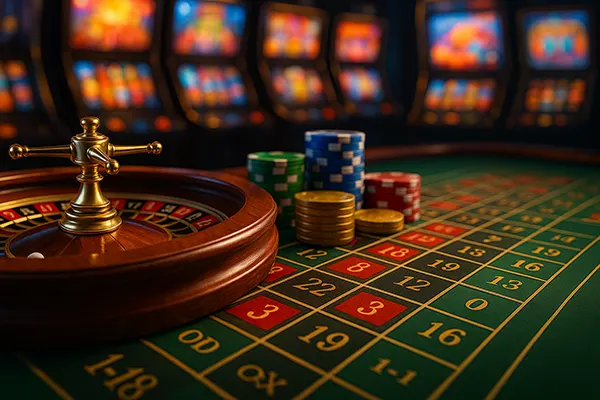
Buy Bonus Mode: Is It Worth Paying for Free Spins? A Mathematical Perspective
In the world of online slots, the “Buy Bonus” feature has gained immense popularity. It offers players the ability to skip the base game and immediately trigger a bonus round, usually filled with free spins or multipliers. But does it make sense from a mathematical standpoint to pay for these perks? Let’s explore how Return to Player (RTP), variance, and expected value work together to influence your decision when it comes to paying for a feature that promises higher excitement and faster results.
How the Buy Bonus Feature Works
Buy Bonus is an optional in-game function that allows players to pay a fixed price — often 50x to 150x the base stake — to access the bonus round instantly. This mechanic is especially popular in modern video slots and is designed for players who don’t want to wait for random bonus triggers. Typically, this purchase leads directly into the most lucrative part of the slot game, such as free spins with sticky wilds or progressive multipliers.
Importantly, not all games offer Buy Bonus in the same way. Some offer various tiers, each with increasing benefits and costs. The pricing and the potential payouts are defined by the game’s mathematical model, which must be balanced to avoid giving players either an unfair advantage or a significant disadvantage.
For this reason, understanding the structure behind the bonus game and the average outcomes is crucial. This allows players to make informed decisions rather than relying purely on the thrill of accessing high-volatility features quickly.
Impact on RTP and Long-Term Value
One of the key elements to evaluate is the change in RTP when using Buy Bonus. In many games, the RTP during the bonus round is higher than in the base game. For instance, a slot might offer an RTP of 96.2% in normal play, while the bonus buy version increases it to 97%.
However, this doesn’t automatically mean you’ll win more money in the long run. The cost of the feature needs to be considered in relation to the expected return. Mathematically, if a bonus costs 100x and returns an average of 96x over time, the RTP is still 96%, but that doesn’t guarantee short-term results.
High RTP in Buy Bonus modes might appeal to strategy-focused players, but they should remember that such purchases don’t eliminate volatility. The swings remain just as extreme — and sometimes more so — than in the base game.
Volatility and Bankroll Management
Buying bonuses can significantly increase the variance of your gameplay. In other words, your results will likely fluctuate more than during standard play. This is because bonus rounds are generally more volatile by design, offering higher potential payouts but also a greater chance of returns below the cost of purchase.
From a mathematical point of view, volatility is a double-edged sword. It can result in substantial wins in short bursts but may also lead to rapid depletion of funds if unlucky streaks occur. For players without a proper bankroll strategy, repeated purchases can become financially unsustainable.
Statistically, even with a fair RTP, most players will experience a range of sessions where the cost of bonuses outweighs the winnings. Only a small portion of sessions will exceed expectations, and these outliers skew the perceived profitability of Buy Bonus features.
The Role of Hit Frequency
Hit frequency — the likelihood of winning anything in a round — is typically lower in bonus buys compared to base gameplay. This is because bonus rounds are programmed to deliver higher top prizes but less frequent moderate wins.
Mathematically, this translates to longer losing streaks between big hits. It’s important for players to recognise this before engaging repeatedly in bonus buys. A high RTP does not imply consistent returns; it simply indicates the theoretical average over thousands of spins or buys.
This characteristic makes Buy Bonus better suited for experienced players who understand the risks and manage their budget accordingly. Casual or risk-averse users may find such volatility overwhelming and financially punishing.

Game-Specific Differences and Strategic Use
Not all Buy Bonus options are created equal. Some games offer better value due to their underlying mechanics, such as multiplier progression, retrigger potential, or sticky wilds. These features influence the overall expected value of a bonus purchase.
For instance, titles like “Money Train 3” or “San Quentin” have Buy Bonus options with different configurations and payout ceilings. Knowing the statistical return and gameplay characteristics of each option helps players target those that align with their risk profile and budget.
In June 2025, many popular titles offer RTP ranges that vary by bonus tier. Players should look for transparent RTP disclosures within the game’s information menu and avoid titles that don’t provide these figures, as hidden odds reduce strategic control.
When It Makes Mathematical Sense
In theory, purchasing bonuses is justified if the expected return closely matches or exceeds the cost — particularly in games where higher-tier bonuses are priced fairly. If the RTP is maximised and the variance fits the player’s financial threshold, then the decision can be mathematically valid.
However, these conditions are rare. Most slot games are designed with a house edge, ensuring that even bonus purchases result in a net loss over time. As such, a player must be analytical, comparing RTP, volatility, and payout tables before committing funds.
The most effective use of Buy Bonus is strategic, not emotional. Players who base their choices on factual understanding — rather than the desire to skip ahead or chase a loss — are more likely to maintain long-term sustainability and gaming satisfaction.
